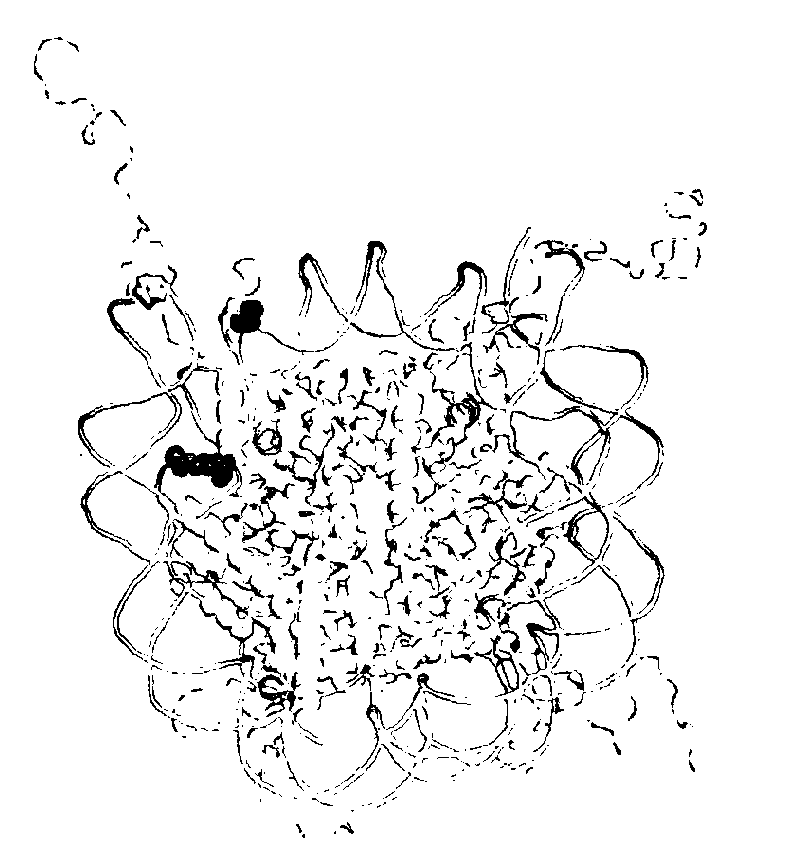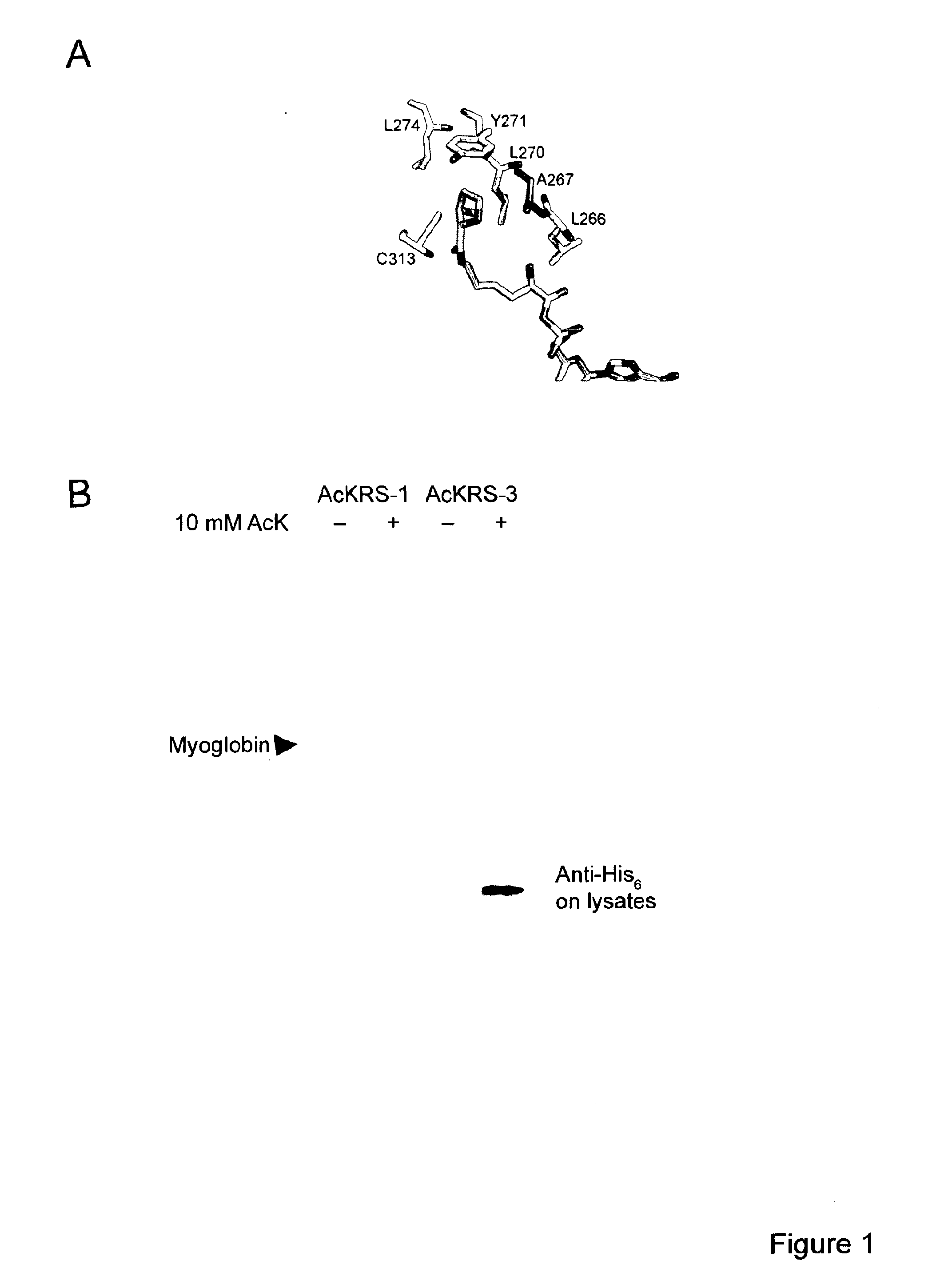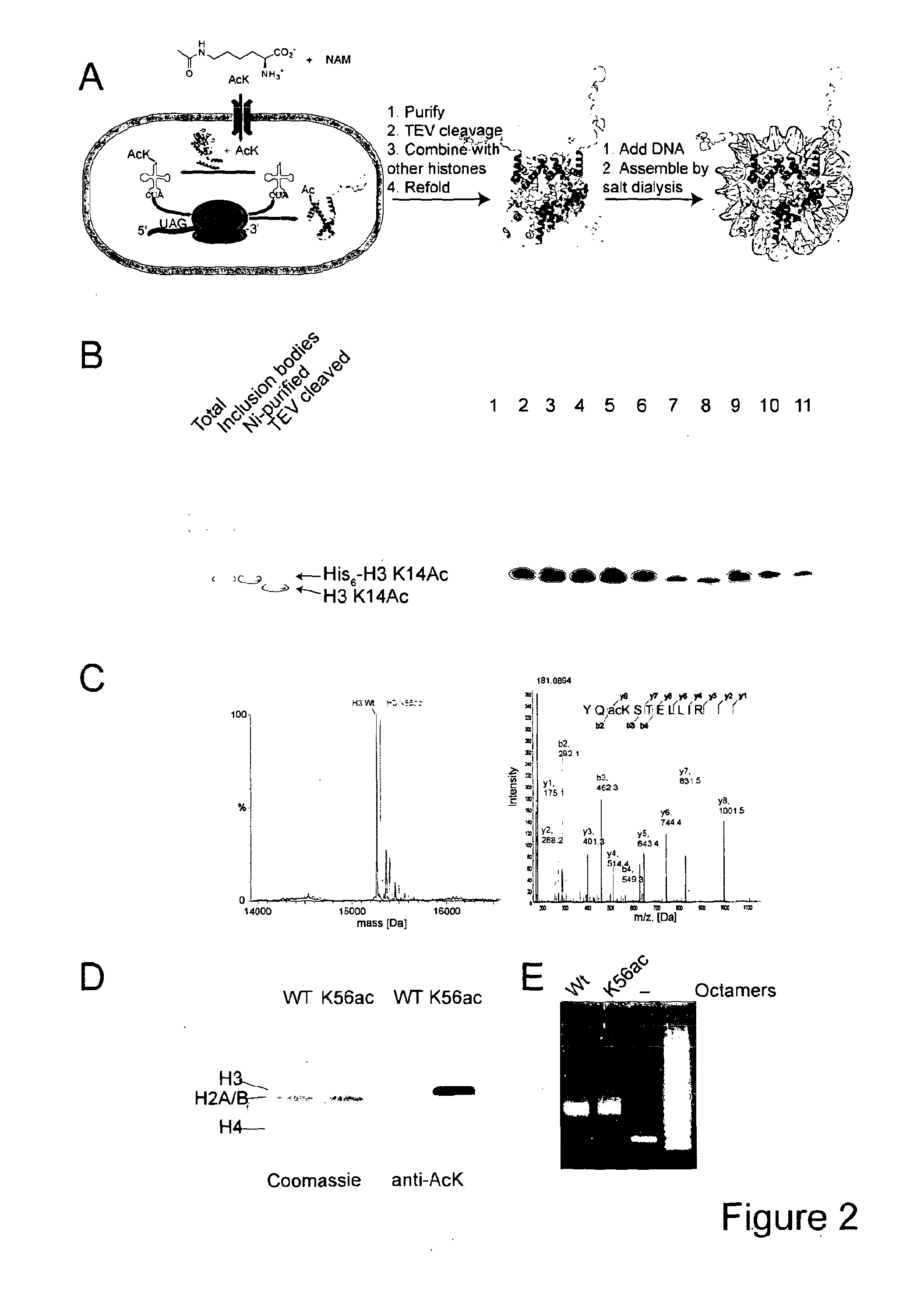ACETYL LYSINE INCORPORATION WITH tRNA SYNTHETASE
a technology of acetyl lysine and trna synthetase, which is applied in the direction of animals/human peptides, sugar derivatives, enzymes, etc., can solve the problems of n-terminal residue limitation of known methods, inability to produce homogeneous recombinant proteins, and modification of peptide thioesters
- Summary
- Abstract
- Description
- Claims
- Application Information
AI Technical Summary
Benefits of technology
Problems solved by technology
Method used
Image
Examples
examples
Summary:
[0120]Lysine acetylation of histones defines the epigenetic status of human embryonic stem cells, and orchestrates DNA replication, chromosome condensation, transcription, telomeric silencing, and DNA repair. A detailed mechanistic analysis of these phenomena is impeded by the limited availability of homogeneously acetylated histones. Here we report a general method for the production of homogenously and site-specifically acetylated recombinant histones by genetically encoding acetyl-lysine. We use these histones to reconstitute histone octamers, nucleosomes and nucleosomal arrays bearing defined acetylated lysine residues. With these designer nucleosomes we demonstrate that, in contrast to the prevailing dogma, acetylation of H3K56 does not directly affect the compaction of chromatin, nucleosome stability or remodelling by RSC or SWI / SNF. We observe an increase in DNA breathing in single-molecule FRET experiments, supporting the proposal that deacetylation of H3K56Ac mediat...
PUM
| Property | Measurement | Unit |
|---|---|---|
| mass | aaaaa | aaaaa |
| mass | aaaaa | aaaaa |
| OD | aaaaa | aaaaa |
Abstract
Description
Claims
Application Information
 Login to View More
Login to View More - R&D
- Intellectual Property
- Life Sciences
- Materials
- Tech Scout
- Unparalleled Data Quality
- Higher Quality Content
- 60% Fewer Hallucinations
Browse by: Latest US Patents, China's latest patents, Technical Efficacy Thesaurus, Application Domain, Technology Topic, Popular Technical Reports.
© 2025 PatSnap. All rights reserved.Legal|Privacy policy|Modern Slavery Act Transparency Statement|Sitemap|About US| Contact US: help@patsnap.com



